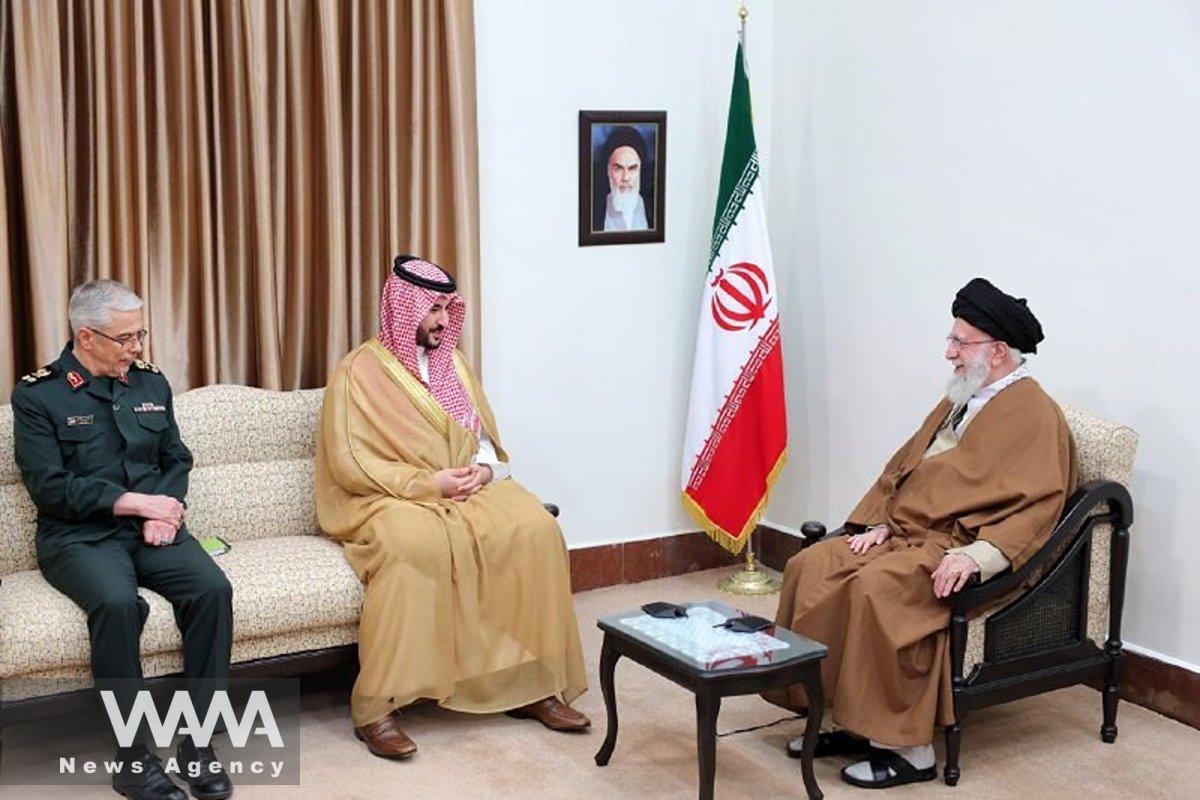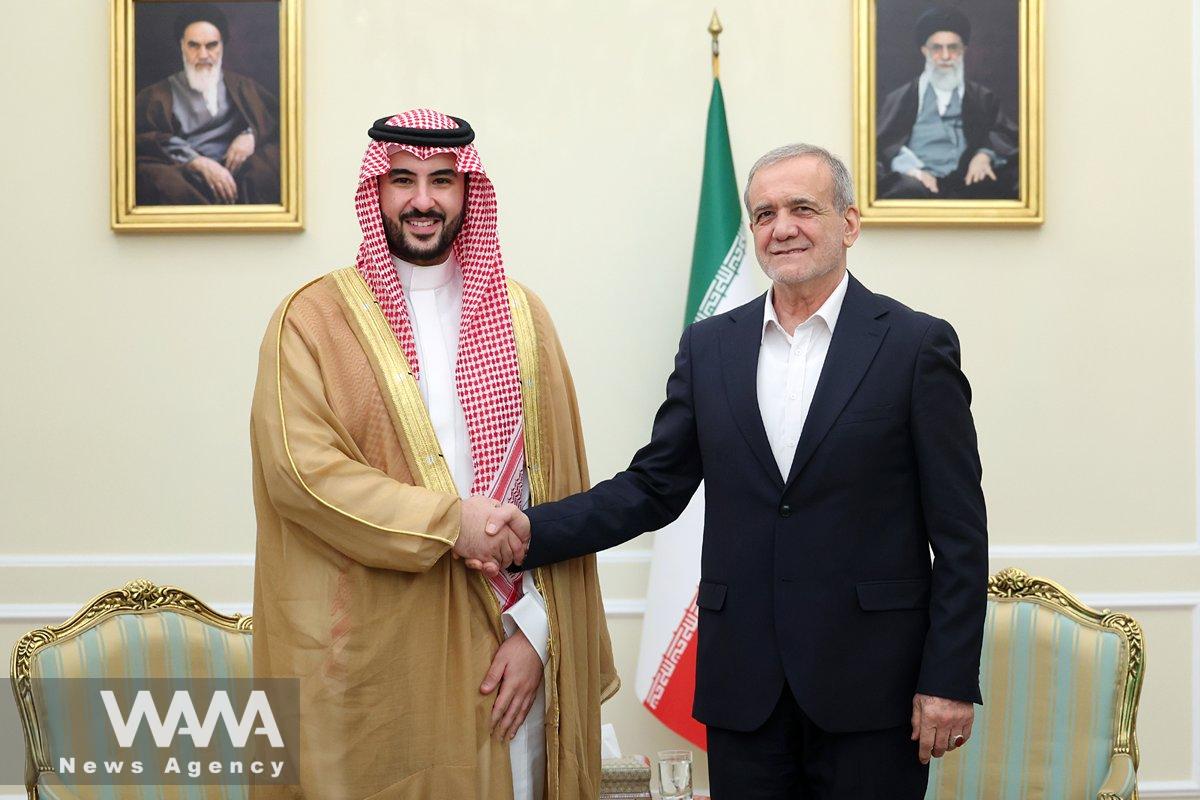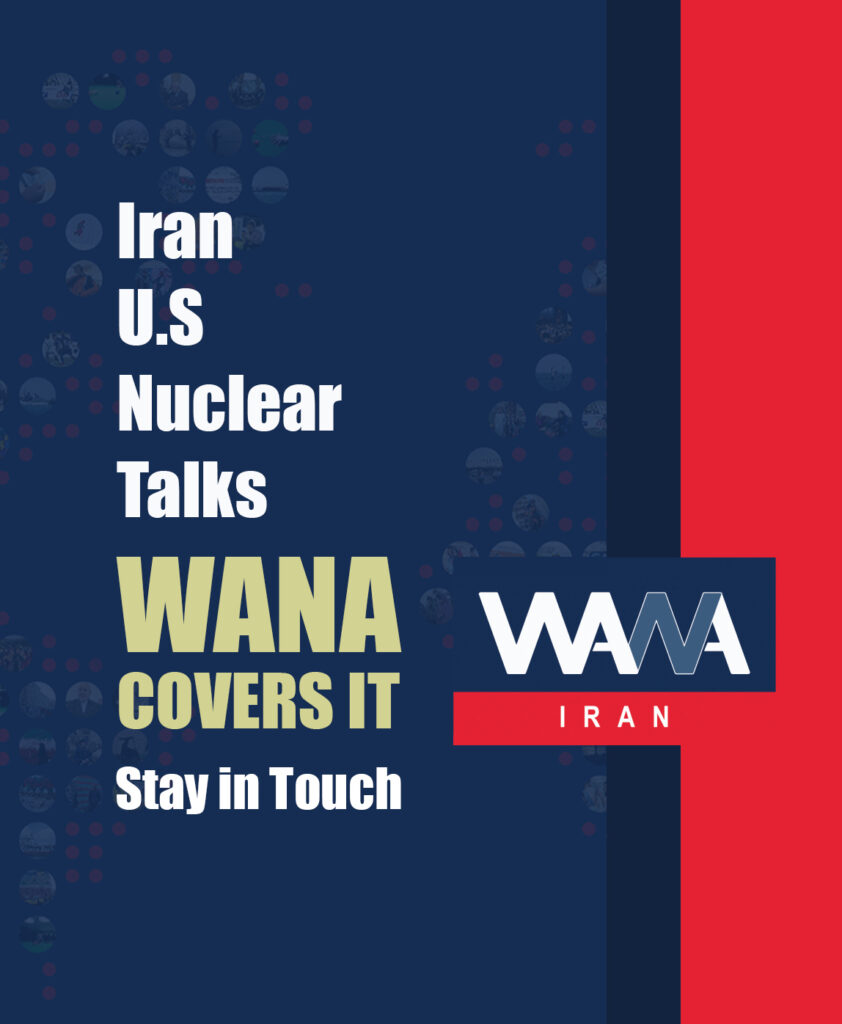A Rare Scene in Iran–Saudi Relations
WANA (Apr 22) – A rare moment unfolded in Iran–Saudi relations as the Saudi Defense Minister, Khalid bin Salman, visited Tehran, carrying a message of peace. The man responsible for regional files and military decisions in Riyadh appeared respectfully alongside Iranian officials before the cameras.
Khalid bin Salman, the close brother of the influential Crown Prince Mohammed bin Salman, personally delivered the King’s message to Iran’s Supreme Leader. This shows the visit wasn’t just a diplomatic encounter—it carried a serious message. A message whose sender was Riyadh, and its audience not only Tehran, but also Washington, Tel Aviv, and perhaps even Beijing.
Riyadh Redefining Its Regional Role
Tehran rolled out the red carpet. Khalid’s visit was a clear sign that Saudi Arabia is redefining its regional policy. It is neither seeking war nor willing to follow others blindly. From the Beijing initiative to Vision 2030, Riyadh is pursuing stability and development, and it knows well that the equation is incomplete without Iran. But behind the smiles, there was a heavy, unofficial yet very clear agenda.

Khalid bin Salman, the Minister of Defense of Saudi Arabia, and Ayatollah Khamenei, the Supreme Leader of Iran, met on April 17, 2025. Social media/ WANA News Agency
Saudi Arabia doesn’t want to be part of America’s maximum pressure campaign on Iran. It is seeking solutions, offering mediation, and has even implied support for diplomacy in the nuclear file.
But a key question arises: Is Saudi Arabia merely playing a tactical game, moving closer to Iran just to neutralize Tehran’s regional leverage with U.S. approval? The answer is likely no. Riyadh views the Beijing agreement as a long-term chess strategy, not a short-term move.
What matters from this angle is that the Saudis no longer want to be mere pieces on America’s chessboard. They are designing a new game of their own. This doesn’t mean cutting ties with Washington.
Saudi Arabia is fully aware of its position in any potential Iran–U.S. conflict and is carefully building a multi-layered balance, seeking closeness with Tehran to reduce tensions, while also maintaining alignment with Washington to manage a broader equation affecting the entire region.
Saudi Arabia’s game overlaps with Iran’s dynamic with the West, but not to betray either side, rather, to protect itself from a fire that could burn everything down.

Iran’s President Masoud Pezeshkian and Saudi Arabia’s Defense Minister, Prince Khalid bin Salman bin Abdulaziz. April 17, 2025. Social media/ WANA News Agency
The Yemen Factor: Unspoken but Central
Yet perhaps the most critical and hidden point in this visit is the long-standing crisis that Saudi Arabia has been struggling with: Yemen. Khalid bin Salman brought with him someone directly involved with Yemen—Mohammed bin Saeed Al-Jaber, Saudi Arabia’s special envoy to Yemeni affairs.
The message of this action was clear: Riyadh is worried about the Red Sea, especially as Ansarullah attacks threaten the security of one of the world’s most vital waterways. Now Riyadh is turning to Tehran, hoping it can influence Ansarullah.
From Saudi Arabia’s perspective, the fragile peace with the Houthis that began in 2023 is shaking. If things remain unchanged, the paths may lead to renewed military conflict. That’s why bin Salman sent one of his closest people to Tehran—to draw new lines, develop a shared strategy, and find a way to calm things down before any explosion.
Khalid bin Salman’s visit may mark a new chapter in Iran–Saudi relations. But one question remains: is this a page of temporary calm, or the beginning of a serious alliance in a region full of fire? Reports suggest that Mohammed bin Salman himself may soon visit Tehran.












